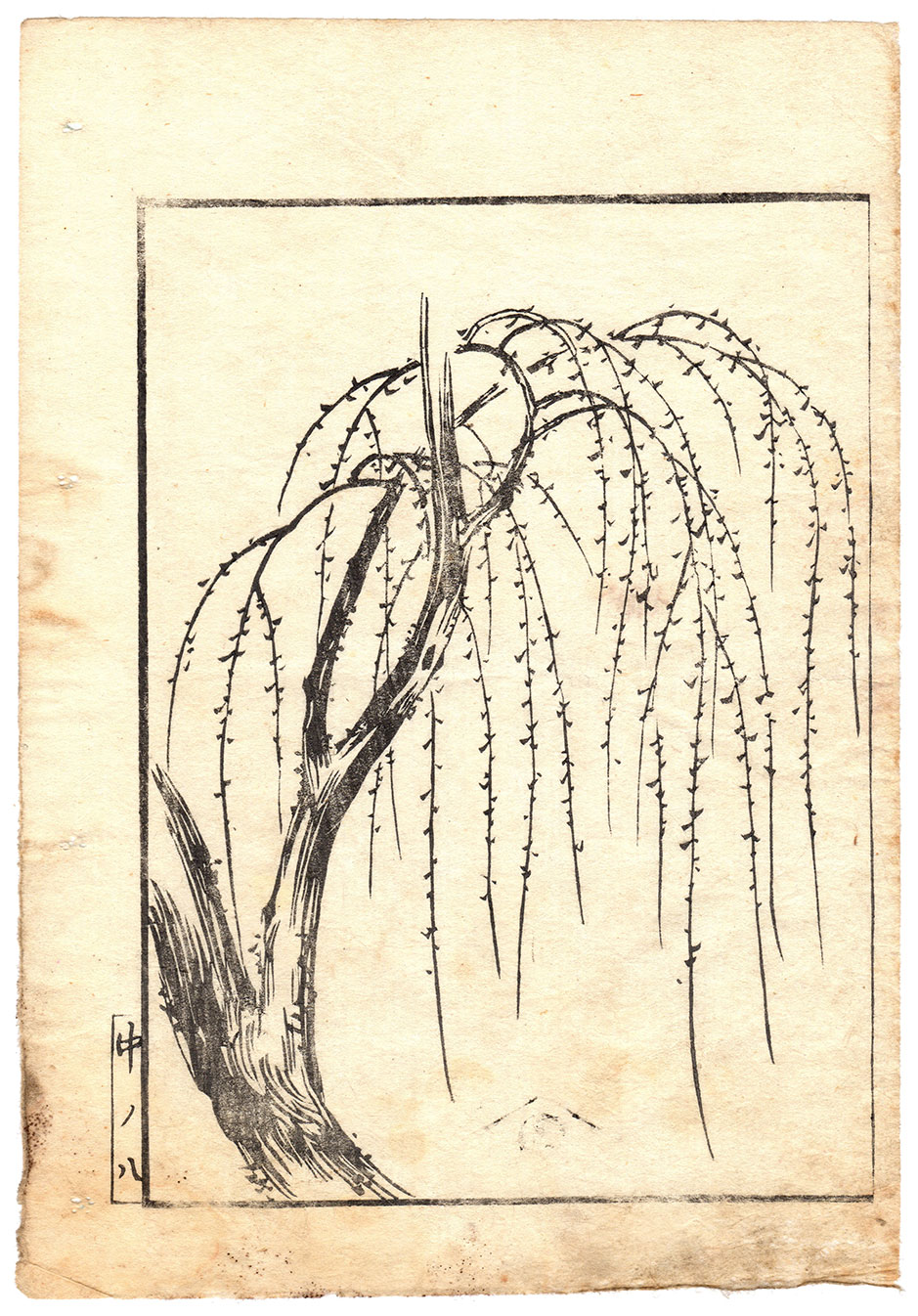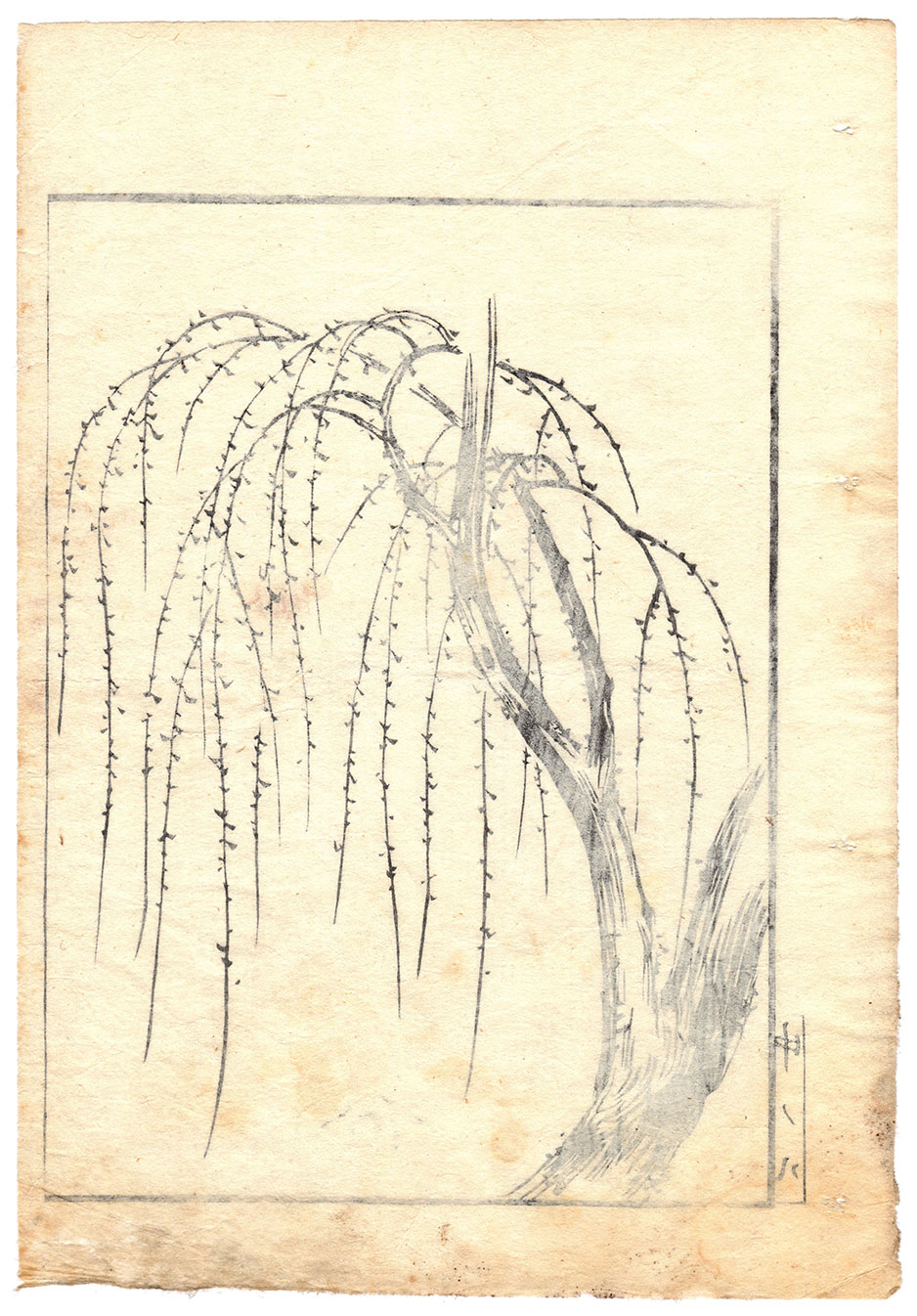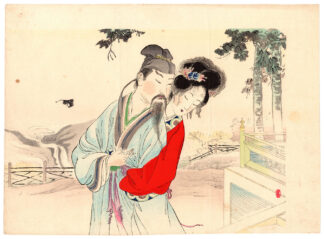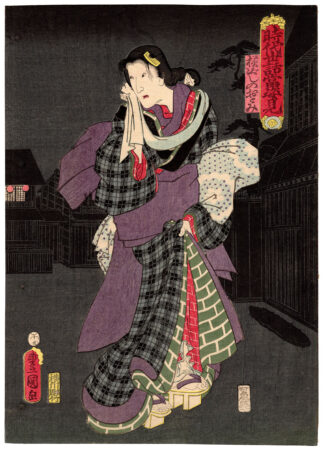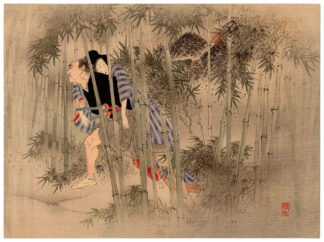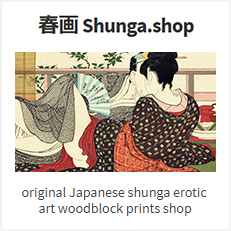Description
Rare sumizuri-e (墨摺絵) monochrome illustration made around 1789 by the famous artist Kitagawa Utamaro (喜多川歌麿) and depicting a willow tree. In the Far Eastern tradition, the willow has many different symbolic meanings. It is also considered a symbol of sexual desire as well as a personification of female beauty and of the joys and sorrows of love. In Japan, in particular, it is often associated with the virtues of the geisha (芸者) who, like the tree, should be graceful, flexible and strong.
The work is taken from vol. 2 (中) of the shunpon (春本) “Ehon Tsukuma-nabe” (會本都功密那倍), that is “Picture Book, Pots at the Tsukuma Shrine”, an erotic book whose title is inspired by an unusual and ancient Japanese festival during which women visit a Shinto shrine wearing cooking pots (symbol of the nuptial offering to the deity) on their heads as hats… according to a mischievous interpretation, a pot for each man with whom they have had relations.
The print on Japanese washi paper (和紙), despite the obvious signs of aging, is in overall fair condition.
